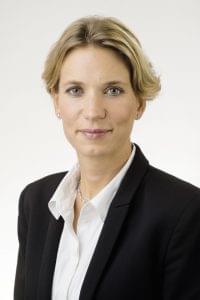Magazine: Anyone can afford having a bank card terminal

Ágnes Hornung
According to Ágnes Hornung, secretary of state at the Ministry for National Economy (NGM), in Hungary the proportion of electronic transactions is still much smaller than the European average. The bank card terminal programme of NGM will install more than 60,000 new bank card terminals in two stages. In the first phase seven companies are going to set up 30,200 new terminals.

Tamás Lévai
Tamás Lévai, senior product development manager of OTP Bank’s Card Acceptance Department told our magazine that bank card payment generates 30 percent higher revenue for retail units than cash payment. This means that those who pay with their debit card spend 30 percent more money with one shopping than cash payers.

Zsolt Mihályffy
Zsolt Mihályffy, sales manager of P.O.I. Partner Kft. (Payment Point) added that today the proportion of bank card payments is only about 20 percent of cash payments. Cash payment creates several thousand forints worth of extra costs for households in a month.
Ms Hornung revealed that the top priorities for Hungarian shoppers when it comes to paying are safety, speed and comfort. In accordance with this, contactless payment has been spreading rapidly in the last 2-3 years. Mr Lévai opined that mobile payment is the most important development direction at the moment, for which users need a smartphone with an NFC feature. The terminals installed in NGM’s bank card terminal programme can be used for both payment methods.

Lajos K. Szabó
According to Lajos Szabó K., partner relations manager of Six Payment Services, the company’s PayPass-capable terminals also have features such as Dynamic Currency Conversion (DCC) and they also accept EP, Szép and Erzsébet cards, plus all types of debit and credit cards of bank card companies. Mr Lévai told that the NGM-supported POS terminals installed by OTP Bank are capable of contactless payment, and they accept not only bank cards but all types of health fund cards and voucher-type cards, plus they can also be used to top-up mobile phones. This year OTP Bank launched the website www.kartyavalszeretnek.hu, where consumers can send a message to tell which is the place where they would like to pay with their bank cards in the future.

Mr Mihályffy explained that POI terminals are different from the average POS terminal in that they can be used to open a bank account, activate bank cards, make an instant transfer between Payment Cards, and they offer services with an added value such as mobile top-ups and utility bill payment. By the end of 2018 the company plans to be present in the market with 45,000 Payment Point terminals – even in the smallest villages.
Mr Szabó K. revealed that for retailers the cost of accepting bank cards is about 50 percent lower than it used to be 10 years ago. Mr Mihályffy added that the P.O.I. Partner Kft.’s Payment Point service is the perfect choice for those retailers who don’t have such a system yet: there is no terminal installation fee and no monthly subscription fee. What is more, from added-value services provided via Payment Point, retailers get a percentage. //
Related news
Financial Literacy Awards Presented
🎧 Hallgasd a cikket: Lejátszás Szünet Folytatás Leállítás Nyelv: Auto…
Read more >The government is extending the margin reduction to additional products
🎧 Hallgasd a cikket: Lejátszás Szünet Folytatás Leállítás Nyelv: Auto…
Read more >“Businesses want to survive and grow”
🎧 Hallgasd a cikket: Lejátszás Szünet Folytatás Leállítás Nyelv: Auto…
Read more >Related news
Christmas shock in commerce: for the first time, we can pay with bank cards in fewer places
🎧 Hallgasd a cikket: Lejátszás Szünet Folytatás Leállítás Nyelv: Auto…
Read more >Hungarian Confectionery Manufacturers Association: trends in 2025 and prospects for 2026
🎧 Hallgasd a cikket: Lejátszás Szünet Folytatás Leállítás Nyelv: Auto…
Read more >Most grocery chains will be open until noon on December 24th
🎧 Hallgasd a cikket: Lejátszás Szünet Folytatás Leállítás Nyelv: Auto…
Read more >






